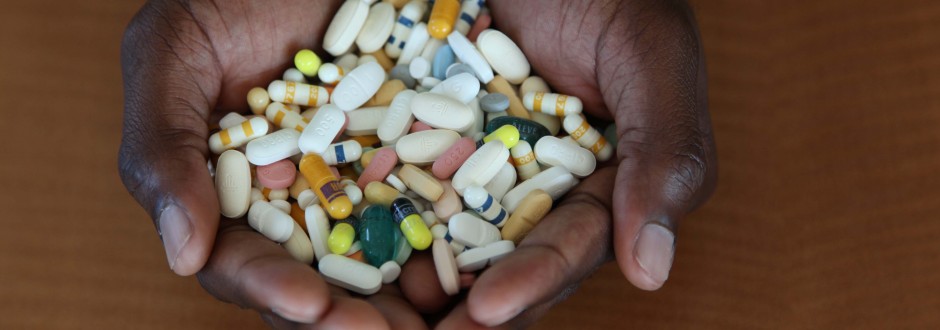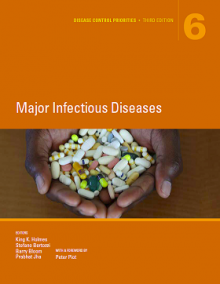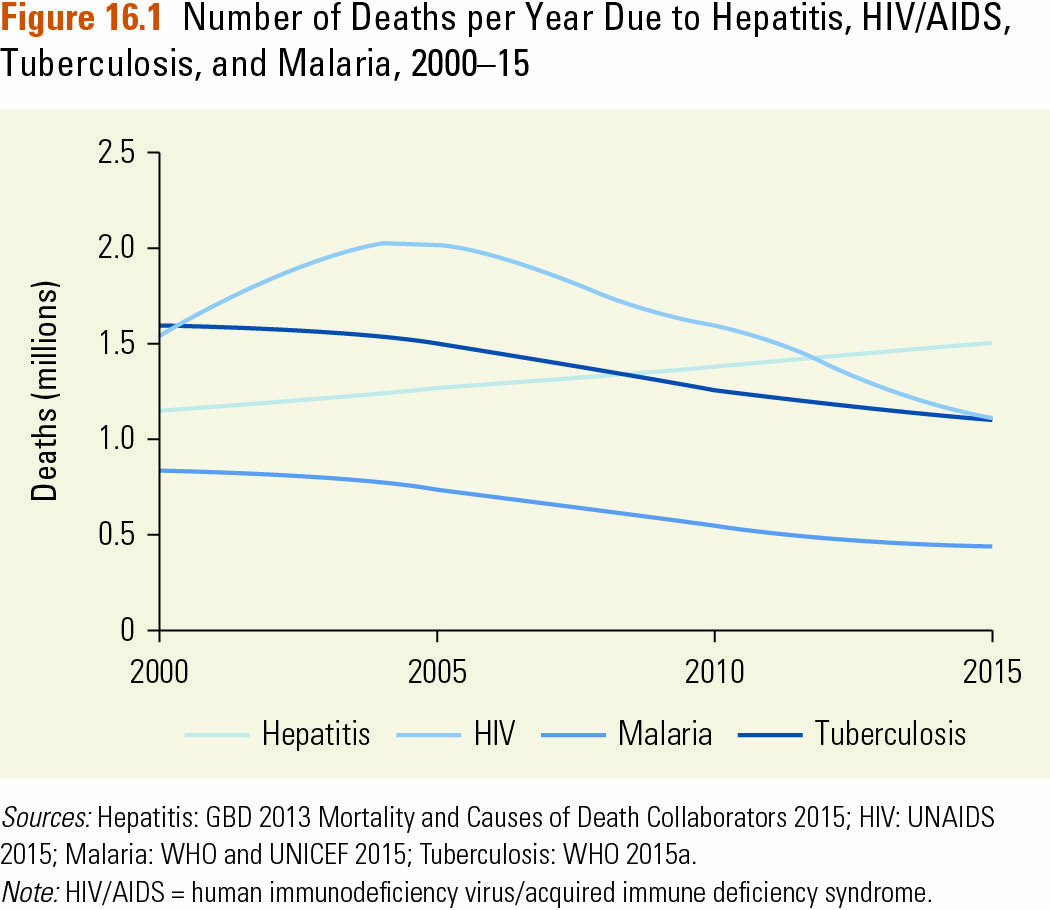Major Infectious Diseases


"This third edition of the Disease Control Priorities comes at a pivotal moment for infectious disease control and research. Its chapters clearly demonstrate that, despite the remarkable progress, infectious diseases remain a major threat to health worldwide—particularly in South Asia and Sub-Saharan Africa—but that an increasing range of highly cost-effective interventions is available. As this volume amply illustrates, innovations in the prevention, diagnosis, and treatment of infectious diseases have been impressive."
Read the complete foreword: HTML | PDF
Infectious Disease Deaths

GBD 2013 Mortality and Causes of Death Collaborators. 2015. “Global, Regional, and National Age-Sex Specific All-Cause and Cause-Specific Mortality for 240 Causes of Death, 1990–2013: A Systematic Analysis for the Global Burden of Disease Study 2013.” The Lancet 385 (9963): 117–71.
UNAIDS (Joint United Nations Program on HIV/AIDS). 2015. How AIDS Changed Everything. MDG 6: 15 Years, 15 Lessons of Hope from the AIDS Response. Geneva: UNAIDS.
WHO. 2015. Global Tuberculosis Report 2015. Geneva: WHO.
News and Events
To Obtain Copies of Major Infectious Diseases:

Download the entire volume from The World Bank
Purchase copies of the volume from Amazon
Volume citation: Holmes, K.K., S. Bertozzi, B.R. Bloom, and P. Jha, editors. 2017. Major Infectious Diseases. Disease Control Priorities, third edition, volume 6. Washington: DC: World Bank.









HIV Prevalence Among Women
Global HIV Prevalence Among Women, Ages 15 – 24 Years, 2014
Source: World Bank 2014; Actualitix